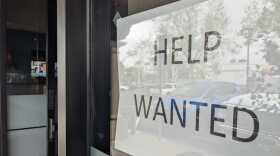A 5.2 magnitude earthquake struck San Diego County on Monday, the largest quake in the region since 2010. While officials have said there were no injuries or major structural damage reported, the sudden jolt served as a wake-up call for many residents to review their emergency preparedness plans.
To better understand how to prepare for a potential earthquake, KPBS Midday Edition spoke with Jacob Margolis, a science reporter for LAist Public Radio and host of the podcast “The Big One: Your Survival Guide.”
This interview has been edited for brevity and clarity.
What should we be thinking about when it comes to staying inside or going outside during an earthquake?
Jacob: People often do run outside and are encouraged to run outside. But here (in the U.S.) our seismic codes and our building quality in a lot of places is much better. And so I would generally trust the buildings that I'm in, especially these days.
What other places are safe inside of your home? Are doorways more supported than a hallway?
Jacob: No, don't do the doorway thing. Doors can hit you, smash your fingers, break your nose, what have you. You can go ahead and just get under a table. If there's no table nearby, what I would try to do is probably squeeze up against a wall where you don't have a bunch of stuff hanging, hopefully. I would say, maybe, you should have a little place in each room that you know is safe to go.
What about if you're driving a car during an earthquake?
Jacob: Slow down gradually. I imagine other people will slow down as well.
We usually don't get any warning when earthquakes happen. Sometimes an alert even comes after the shaking is well underway. Why is that?
Jacob: The reason we are able to predict those in any sort of capacity, is there's a really big network, early warning system that's installed across the west coast of the U.S.
And so what happens is the sensors near where the earthquake is, so say down in — around San Diego — it can actually pick up that shaking and send an alert to phones hopefully faster than the shaking actually gets there.
If it is under a magnitude five earthquake, you might not get an alert. It depends. If you download the My Shake app, you can set the alerts lower. If you didn't get an alert and it started shaking and then you got it, odds are you're kind of probably too close to the shaking or the system messed up.
What are some non-negotiables for earthquake preparedness when living here in California?
Jacob: Water. One gallon of water per person per day. Because I have the space, I shoot for three weeks. The likelihood is that water systems will break, or water will not be drinkable as we've seen during the recent fires. Something can happen with that system, you need water to survive.
If you have medication, make sure you have extra medication on hand.
I have a little bit of cash on hand in case payment systems go down.
And then obviously food is always a good option, a way to cook that food, like a camp stove.
So what's your advice for explaining earthquakes to kids in a way that doesn't freak them out?
Jacob: With my kids, I tell them what the science is: It's that the earth is under a lot of stress in certain places.
When that stress gets released those waves travel through the earth just like sound waves through the air. That shaking is what we are feeling. If there is an earthquake and you're in your room, stay in your bed.
Anybody can call out ‘earthquake!’ at the dinner table and you get under the table. It sort of normalizes that whole process with kids and you turn it into play.








